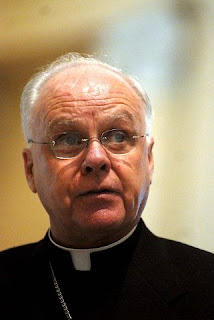This morning’s New York Times has an interesting glimpse at a new wave in chaplaincy care — which isn’t always pegged to one particular faith:
Some of the hospice patients talk about their impending deaths, or about God. Most just talk about what people always talk about — unfinished business and unanswered questions: regrets over firing an employee 50 years ago; the pet no one has yet promised to adopt; feeling sick to death of being sick yet not ready to die. About Bach. “How did he dream up that music?” one woman asks.
Listening to final inquiries like these has long been the domain of a family priest or rabbi. But for a growing number of Americans who do not know a member of the clergy, that bedside auditor is increasingly likely to belong to an emerging professional class known in the hospice world as a pastoral counselor or chaplain, who may or may not be a clergy member.
The encounter with a chaplain can be profound and spiritual, and sometimes religious in a traditional way. More and more, though, ministering to the terminally ill in hospice care is likely to be nonsectarian, or even secular.
In the quarter-century since Medicare and some private insurers began picking up the bill for hospice care, it has become a common recourse for the terminally ill. With doctors, nurses, social workers and ample supplies of pain medication dispatched to their homes or nursing facilities in the final weeks and months, about 1.3 million Americans died last year in hospice care.
Spiritual counseling has always been an optional part of the service. But recently, the proportion of patients choosing to receive it, and the number of new chaplains entering the field to meet the need, have risen sharply.
Chaplain services in New York City have nearly doubled since 2004: About 65 percent of the city’s 4,000 hospice patients accept visits from chaplains today, compared with about 35 percent four years ago, according to the two major hospice providers, the Visiting Nurse Service of New York and Continuum Hospice Care.
Nationwide, a study released two weeks ago by the National Center for Health Statistics of the Centers for Disease Control set the proportion of patients accepting a chaplain’s care at 72 percent in one sampling, as compared with the 59 percent another group found in 2000.
The new demand has contributed to a steep rise in the number of chaplains of all kinds, said Josephine Schrader, executive director of the Association for Professional Chaplains, the largest certification body in the country. The increase includes traditional chaplains like those who serve police and fire departments, but the vast majority of recruits in the last 10 years — an estimated 3,000 chaplains, representing a 50 percent jump, she said — are working in hospice care.
They are in some ways a different breed. “The new chaplain culture is more professional and secular,” Ms. Schrader said, and “more adaptable” in approach.
Check out the rest at the Times link above.
Photo: by Ruby Washington, the New York Times

